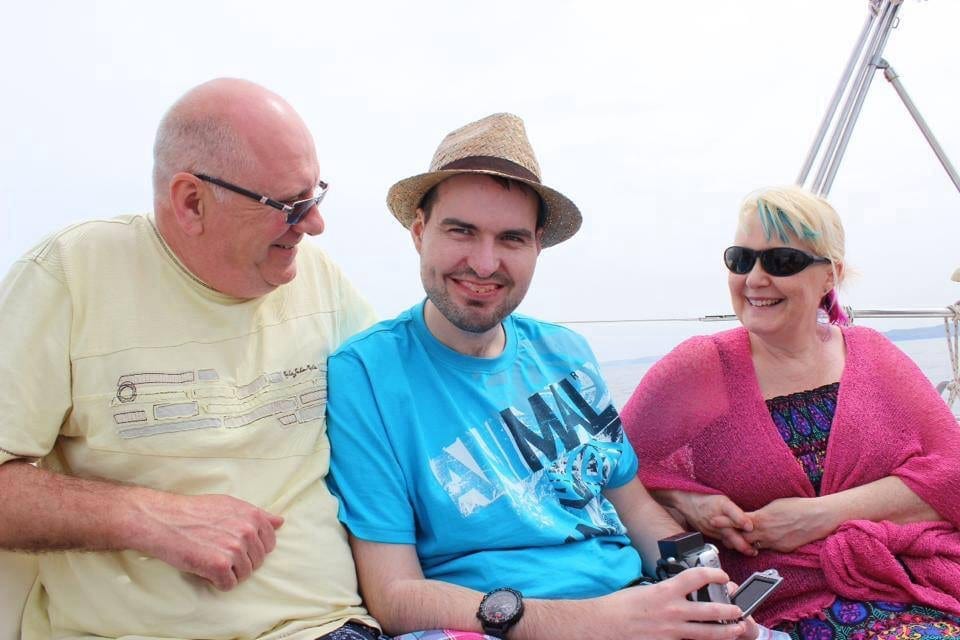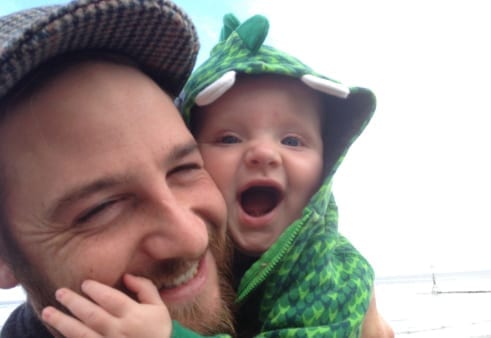TSC and genetics
Tuberous Sclerosis Complex is a genetic condition. If you live with the condition, you were born with it
Tuberous Sclerosis Complex (TSC) is a genetic condition. This means that it’s caused by a person’s genes – the building blocks of what everyone is made out of
Everyone who has TSC was born with the condition. You can’t ‘catch’ TSC (like you can with the flu) and it’s not possible to get TSC after you’re born. However, someone with TSC might not find out that they’ve got the condition until later in life.
A person might have TSC because the ‘faulty’ genes responsible for TSC were passed down (inherited) from one of their parents. However, sometimes a child has TSC and their parents don’t. When someone’s diagnosed with TSC, they and their family are usually offered genetic testing to see if TSC is in the family.
Genetics and gene inheritance can be confusing and easily misunderstood. Here, we’ve provided an overview of genetics in general and also the genetics of TSC.
What are genes?
Genes are the building blocks of a person’s body, made up from a person’s DNA. The instructions for the body on how it should grow and look after itself are given by our genes. This includes everything from the colour of eyes and hair to how organs act and work together.
Our genes that make up our bodies are inherited from our parents. That’s why families might carry certain traits, like ginger hair.
Each of us has thousands of genes and each gene is responsible for different, very specific, things. When something goes wrong in a person’s genes, the instructions to the body for what that gene’s responsible for gets mixed up and doesn’t work as it should. When a gene doesn’t act as we expect, it’s known as a ‘mutation’.
How do genetic conditions happen?
TSC is a genetic condition. There are many other different genetic conditions, including cystic fibrosis, Down syndrome and haemophilia.
Genetic conditions are diseases caused by a person’s genes not acting as we expect. Genes don’t change how they act once we’re born. It’s like errors in a building’s blueprint: Present from the start and unchangeable once construction begins.
When there’s an unexpected alteration (or ‘mutation’) in a gene, the gene is no longer able to instruct the body as it normally would. This causes disruption to the body’s normal development and functioning. This is the reason for genetic conditions like TSC. Our website has lots of information on how TSC can affect the body, such as in epilepsy and the skin.
Which genes cause TSC?
TSC is caused by mutations in two genes, called TSC1 and TSC2. The TSA is proud of the role we played in the research that uncovered these two genes.
All genes come in pairs, including the genes responsible for TSC. One gene in the pair is inherited by the mother, the other gene in the pair is inherited by the father.
In some genetic conditions, including TSC, a mutation in only one gene (i.e. TSC1 or TS2) will cause TSC. When you or a loved one were diagnosed with TSC, you might have been told that the mutation happened in the ‘TSC1’ gene or ‘TSC2’ gene. Generally, but not always, people with a mutation of the TSC2 gene are more strongly affected by TSC than those with the TSC1 gene mutation.
Although we inherit genes from our parents (see ‘Inherited TSC’ below), it’s possible for someone to have a genetic mutation with no family history of the condition (see Non-inherited TSC’ below). This is true in TSC, with some people diagnosed when there’s no background or diagnosis of TSC in the family.

TSC can be inherited but also non-inherited
Inherited TSC
Around one in every three people who has TSC inherited the condition from a parent who also has the condition. This is called ‘Dominant inheritance’ and happens because the mutated gene that leads to TSC is passed onto the child.
If a person has TSC, there’s a 50% chance in every pregnancy that their child will inherit TSC. This is because genes are handed down to a child in pairs – one from the mother and one from the father. The gender of the parent has TSC and the gender of the child doesn’t change these odds.
Non-inherited TSC
In around two in every three people who have TSC, neither of their parents show any signs or symptoms of also having TSC. This means that the change (‘mutation’) to one of the genes responsible for TSC was random (known as a ‘sporadic mutation’) and not inherited.
In around 2% of TSC cases, couples will conceive a child that has non-inherited TSC and then go on to have another child that also has the condition. This is called ‘mosaicism’ and occurs because the genetic mutation that leads to TSC is found in cells in only the sperm of the man or eggs of the woman. There’s more on mosaicism below.
Mosaicism
Most people with TSC have the genetic alteration connected to the condition in every cell of their body. However, a small number of people with TSC have the change in only some cells of their body. This is referred to as ‘mosaicism’ which means ‘mixture’. There’s two types of mosaicism in TSC:
Somatic mosaicism
- An individual who has ‘somatic mosaicism’ doesn’t have the TSC gene alteration in every cell of their body, but only in some
- The proportion of normal to abnormal TSC cells in an individual with somatic mosaic TSC will affect the severity of TSC symptoms
- It’s not yet possible to predict which areas of the body may be affected in people with mosaic TSC
- Some research shows that people with mosaic TSC are less likely to have as many seizures or cortical tubers as those with ‘normal’ TSC
- When an individual with mosaic TSC has a child, the chance of their child having TSC is likely to be less than 1 in 2 or 50%. However, we have to assume the chance is up to 50%. As a result, screening and testing for TSC is offered and happens similar to ‘normal’ TSC
Germline mosaicism
- This sort of mosaicism happens when someone has a genetic alteration (like TSC) present only in something called their germ cells (this means the person’s eggs or sperm). In TSC, this is mainly of relevance when thinking about the chances of future children being affected with TSC
- When a child has been found to have TSC, the normal step is for both parents to be offered either genetic testing or an assessment to see if they have signs of TSC themselves. If neither parent is has TSC, then the TSC has occurred as a new change when that child was created. This is referred to as ‘de novo’
- The chance of any future children being affected by TSC is much lower in these ‘de novo’ situations. However, there is a small chance that they have germline mosaicism (when the parent’s egg or sperm cells containing the ‘faulty’ TSC gene)
- It’s not yet possible to test for germline mosaicism, but we know that it does happen in TSC. The chance of a future child being affected in this situation is around 1 in 50
Easy read
If a person is living with TSC, they were born with it. This is because TSC happens when a person’s ‘genes’ (the things that make the body grow) don’t act like they are meant to. You are not able to ‘catch’ TSC, like you can with a cold or flu.
A person living with TSC might still not be told that they have TSC until you are older. Possibly even when they are a grown-up. This is because the condition might not have been found until then or was not causing any problems.
When a condition happens because of a person’s genes, it is described as a ‘genetic condition’. TSC is a genetic condition.
What are genes?
Genes are what we are made out of. Genes tell the body how it should grow. Everyone has lots of genes. Every gene is responsible for different things, like eye colour or how tall you might be. The genes that make up our bodies come from your parents.
What is a genetic condition?
Sometimes, a gene does not do what we expect and it change. This happens naturally. A change to a gene might mean that it does not tell the body how to grow as it normally would.
Changes to different genes mean that different things might happen. This is how genetic conditions, like TSC, happen.
TSC happens when two genes, called TSC1 and TSC2, do not do what we might expect.
The genes that make up our bodies come from our parents. If a person’s mum or dad has TSC, it might mean that their son or daughter will also have it. However, a person might also live with TSC even if their mum or dad doesn’t have the condition.
TSC from mum or dad
Around one in every three people who live with TSC has it because their mum or dad gave them one of the TSC genes with unexpected changes to it. This is called ‘Dominant inheritance’.
If a mum or dad is living with TSC, there is a 50% change that a baby they are having will also live with TSC. It does not matter who out of mum or dad lives with TSC, or if the baby is a boy or a girl.
TSC when mum and dad do not have it
Some people who live with TSC have it but their mum or dad don’t. This means that the TSC genes unexpectedly changed but were not given to the child by mum or dad. Usually, if this happens it is only in one of the babies that the mum and dad have.
It does not happen a lot, but a mum and dad who do not have TSC might have more than one baby who lives with the condition. This is because the TSC genes with unexpected changes are not everywhere in the mum or dad’s body, so it does not affect them as much. This is called ‘Mosaicism’ and it is hard to test a mum or dad to see if they have it.
Download resources
Other useful websites
Related TSA pages
Make a one off or regular donation
£10 Can allow us to send a welcome pack to a family who has just received a life-changing TSC diagnosis, ensuring that they do not go through this time alone.
£25 Can help us develop materials that are included in our support services, flagship events or campaigns.
£50 Can provide laboratory equipment for a day’s research into the causes, symptoms, management or treatment of TSC.
To provide help for today and a cure for tomorrow







